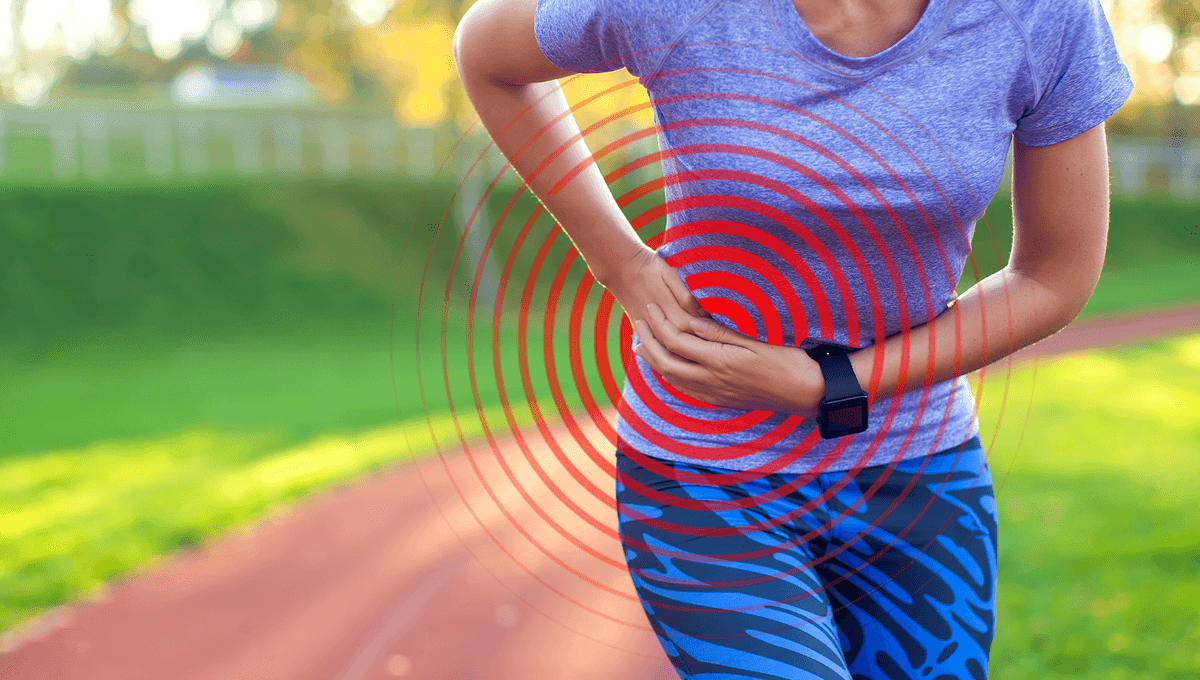
Exercise is supposed to be good for us, and yet every so often, our body rewards our efforts to keep ourselves healthy with what we can only assume is the same level of pain as a xenomorph breaking out of your belly… Okay, maybe we’re being a bit melodramatic, though stitches are still pretty unpleasant – but what exactly are they?
What is a stitch?
Also commonly known as a side stitch, the medical term for this phenomenon is exercise-related transient abdominal pain. This name gives some good clues as to what it involves; a pain felt within the abdomen – often around the area just underneath the bottom of the ribcage – that’s brought on by physical activity, and eventually goes away.
The intensity of this pain can vary – sometimes it can just feel like a slight ache, but when on the more severe end of the scale, it’s often described as sharp and stabbing. Ouch.
What causes a stitch?
Despite the fact that most of us will have experienced a stitch at some point, scientists don’t actually know exactly how it works. There are, however, multiple theories. These include lack of blood flow to the diaphragm, cramp, and mechanical stress on the ligaments in the abdomen, but the most prominent idea is that stitches are caused by irritation of the parietal peritoneum.
The peritoneum is the membrane that lines the abdominal cavity (the space that holds the organs in our digestive system, as well as the spleen and kidneys), and the parietal part of it is the outermost layer, attached to the abdominal and pelvic wall.
While more research needs to be done to solidify exactly how irritation in this area occurs and leads to a stitch – one suggestion is increased friction between the two peritoneal layers – some scientists argue that there’s plenty of evidence to support the theory.
For example, previous research has shown that other pain arising from the parietal peritoneum is made worse by movement, and quickly goes away when whatever is exacerbating the pain is taken away – much like how a stitch gets worse if you carry on exercising and wears off when you stop.
That’s far from the only evidence, but more is still needed to know for certain whether this theory is correct.
Can stitches be prevented?
While the exact cause is unknown, there are some factors that potentially make getting a stitch more likely. That gives us a list of things we can do to try and prevent them, although there’s no guarantee that they’ll work – the lack of a defined cause means that they’re mostly based on anecdotal evidence, which isn’t always reliable.
One oft-touted recommendation is to avoid eating a heavy meal or drinking a lot just before exercise, which won’t come as a surprise to anyone who had to endure gym class straight after lunch break – people often find that their stitches are more intense when they’ve not long eaten.
Other common suggestions include making sure that your workouts don’t go from zero to 100 – try to warm up properly first and gradually build up the intensity – and drinking only small amounts of fluid during exercise. Getting fitter over time might also help, but it’s still possible to get a stitch even if you’re on the more athletic side.
How to treat a stitch
Again, there’s no surefire way to stop a stitch in its tracks, but most of the time, it tends to ease up when you stop exercising. Deep breathing, pushing or stretching the area where the pain is, and bending over forward have also all been reported to help – though what works for some won’t necessarily work for others.
All “explainer” articles are confirmed by fact checkers to be correct at time of publishing. Text, images, and links may be edited, removed, or added to at a later date to keep information current.
The content of this article is not intended to be a substitute for professional medical advice, diagnosis, or treatment. Always seek the advice of qualified health providers with questions you may have regarding medical conditions.
Source Link: What Actually Is That Stitch You Sometimes Get When Exercising?